Omaha offers residents and visitors ample opportunities to enjoy the outdoors thanks to its diverse parks spanning over 10,000 acres across the metro.
| Park Name | Features |
|---|---|
| Memorial Park | War memorials, concerts |
| Heartland of America Park | Lake, fountain, boat rides |
| Zorinsky Lake Park | Lake, trails, playgrounds |
| Elmwood Park | Golf course, pool, trails |
| Gene Leahy Mall | Sculptures, slides, walking paths |
| Hanscom Park | Historic park, lagoon, pavilion |
| Lauritzen Gardens | Botanical gardens, bird sanctuary |
| Lewis & Clark Landing | Riverfront, historical exhibits |
| Miller Park | Golf, pavilion, pool |
| Standing Bear Lake | Fishing, boating, trails |
| Tom Hanafan River’s Edge Park | Views, trails, events |
| Walnut Creek Lake & Recreation Area | Lake, trails, picnic areas |
From riverfront green spaces to lush gardens, arboretums and recreation areas, Omaha parks provide perfect settings for play, relaxation or connecting back to nature without traveling far. Here are 12 can’t-miss parks to check out when visiting Omaha.
Lewis and Clark Landing
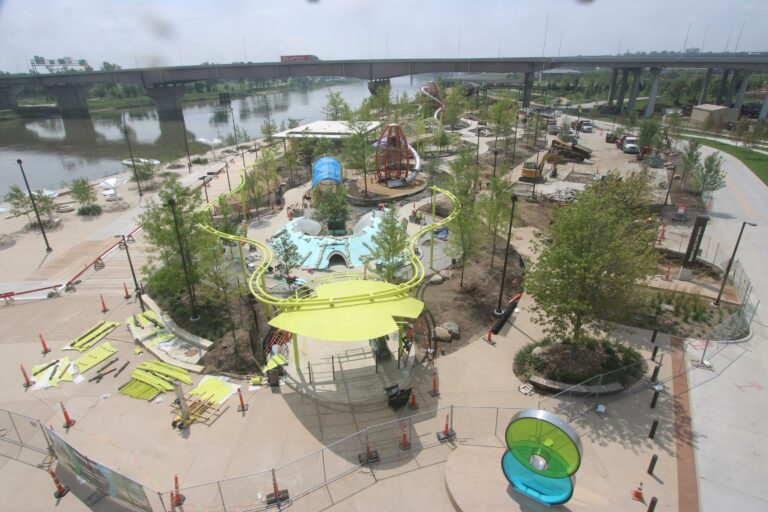
Name and Location: Lewis and Clark Landing is a riverfront park located in downtown Omaha, Nebraska along the Missouri River.
History and Significance: Developed as part of recent riverfront revitalization efforts, Lewis & Clark Landing commemorates the landmark expedition with a public green space for recreation and events. Native landscaping and trails connect visitors to the river.
What to Expect: Riverside walking paths, open lawns, paddling/rowing access. Features memorials to the expedition, informational signage about local tribes and ecology. Site of festivals, charity walks and outdoor fitness events.
Visitor Information: Free access, open daily 6am-11pm. Limited free parking by boat ramp. Paid street parking nearby, TrailLink station accessible. Partly wheelchair/stroller friendly.
Situated along the Missouri River just north of downtown, Lewis and Clark Landing park contains expansive lawns, winding trails with educational plaques marking the famed explorers’ expedition, and tranquil marina views. The pedestrian bridge crossing the Missouri River allows visitors leisurely passage to or from Iowa for taking in the picturesque waterfront without navigating vehicle traffic.
Throughout the summer, Lewis and Clark Landing hosts yoga sessions, movie nights, stand-up paddleboard clinics and riverfront strolls. On any visit, you can spread out a blanket on the grassy knolls, cast a fishing line into the water, cycle the trails circling the park or simply sit awhile observing life on the marina.
Elmwood Park
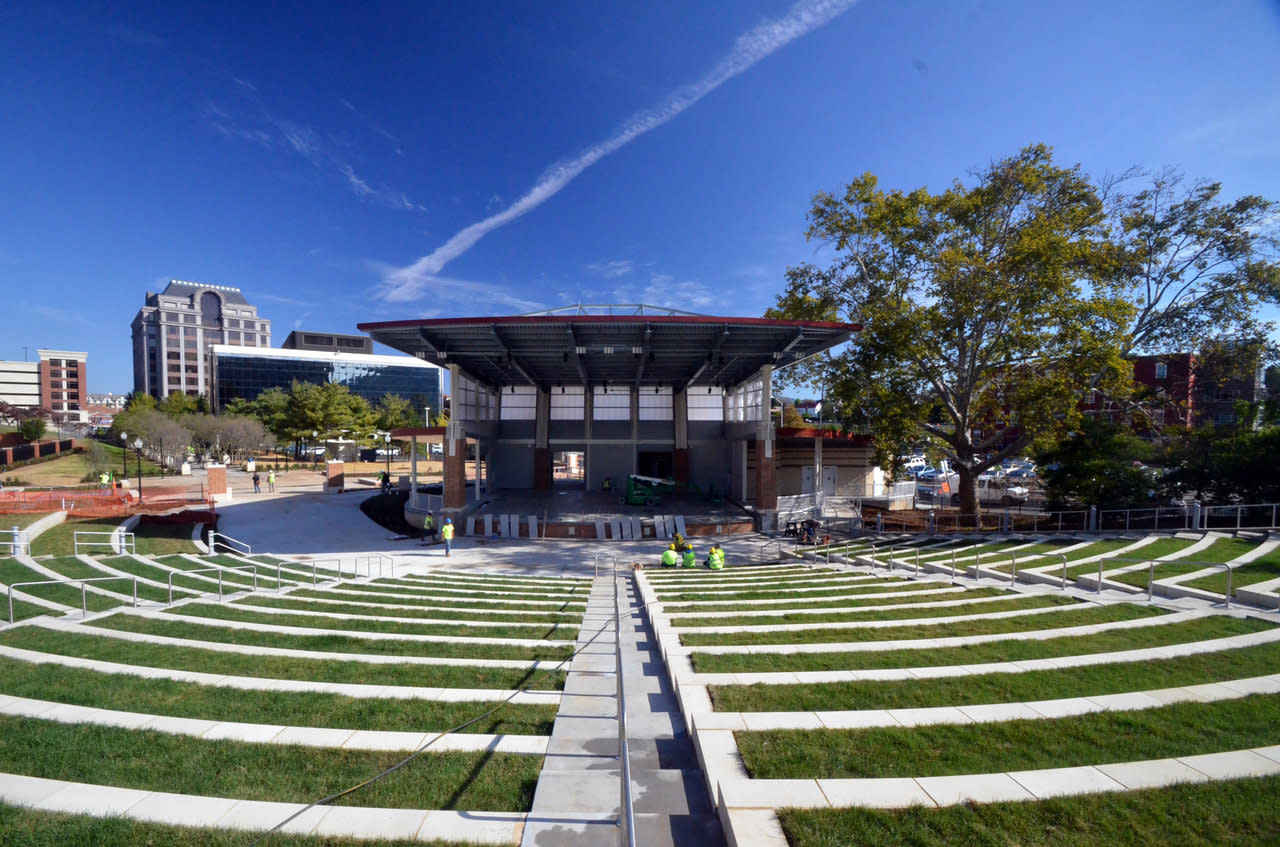
Name and Location: Elmwood Park is a large public park located in central Omaha, Nebraska spanning 60 acres.
History and Significance: Originally purchased in 1885, the park is Omaha’s oldest municipal park. It has remained a popular spot for recreation, picnics, and community events for over 100 years. The park has gardens, ball fields, picnic space, and a pavilion.
What to Expect: Outdoor and garden areas for picnicking, walking, festivals, and playing. Sports facilities include tennis/basketball courts, baseball diamonds, and a playground. The pavilion can be rented for gatherings. Seasonal concessions available.
Visitor Information: Free admission. Open daily from 6am to 11pm. Pet friendly. Limited onsite parking, additional nearby street parking. Restrooms, walking paths, open green space.
Elmwood Park spans 60 acres in central Omaha acting as both a recreational hub and serene urban greenspace. Tennis courts, basketball courts, baseball diamonds and an archery range offer active fun while kids burn energy at the playground and splash pad area.
Yet Elmwood also provides perfect backdrops for yoga on the Great Lawn, movie nights under the stars in the park’s amphitheater or leisurely strolling the loop trail around its three ponds. Specialty gardens like the Rose Garden, Iris Garden and lily pond showcase horticultural beauty across the grounds. With both lively activities and peaceful natural refuges, Elmwood Park welcomes visitors of all ages and interests year-round.
Heartland of America Park
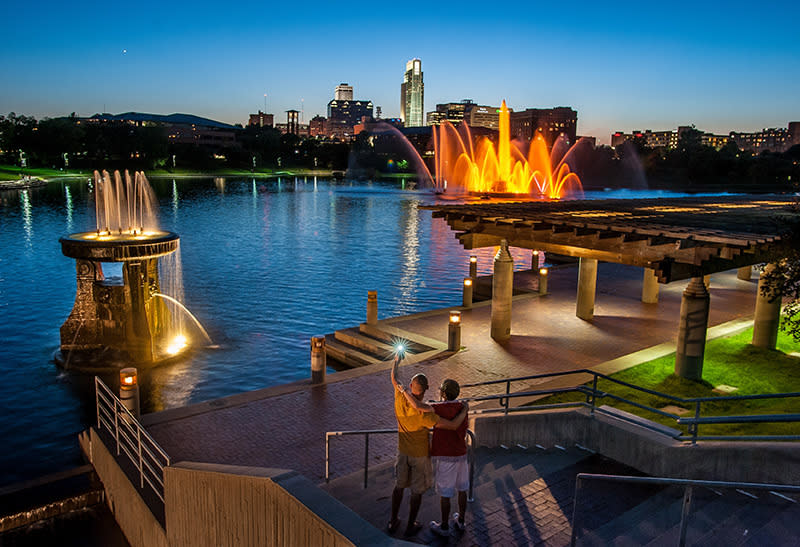
Name and Location: Heartland of America Park is an urban park located in downtown Omaha, Nebraska along the Missouri River.
History and Significance: Developed as part of recent Omaha riverfront renewal efforts, Heartland of America Park opened in 2006 reclaiming industrial land for public recreation. Part of Lewis & Clark National Historic Trail.
What to Expect: Attractions include fountains, waterfalls, walking paths, pedestrian bridge over railroad tracks giving scenic river views. Also features memorials for pioneer history and bison/wildlife conservation efforts.
Visitor Information: Free access, open daily. Limited free parking, additional paid street parking nearby. Main paths are wheelchair/stroller friendly. Pets allowed on leashes.
The vantage point from Heartland of America Park allows impressive views of Omaha’s expanding downtown skyline while also appreciating some artistic flair. Whimsical sculptures like The Thread and Guardian Spirits dotting the 18-acre space inspire community connectivity and hope. From April through October, Heartland hosts weekly farmers markets showcasing hyperlocal food and handmade goods.
Omaha citizens also gather for special events like fitness charity walk/runs, cultural festivals, and summer concert series. Whether stopping by to snap a photo overlooking downtown or attending a lively community event, Heartland of America Park delivers elevating views and experiences minus costly admission fees.
Washington Park
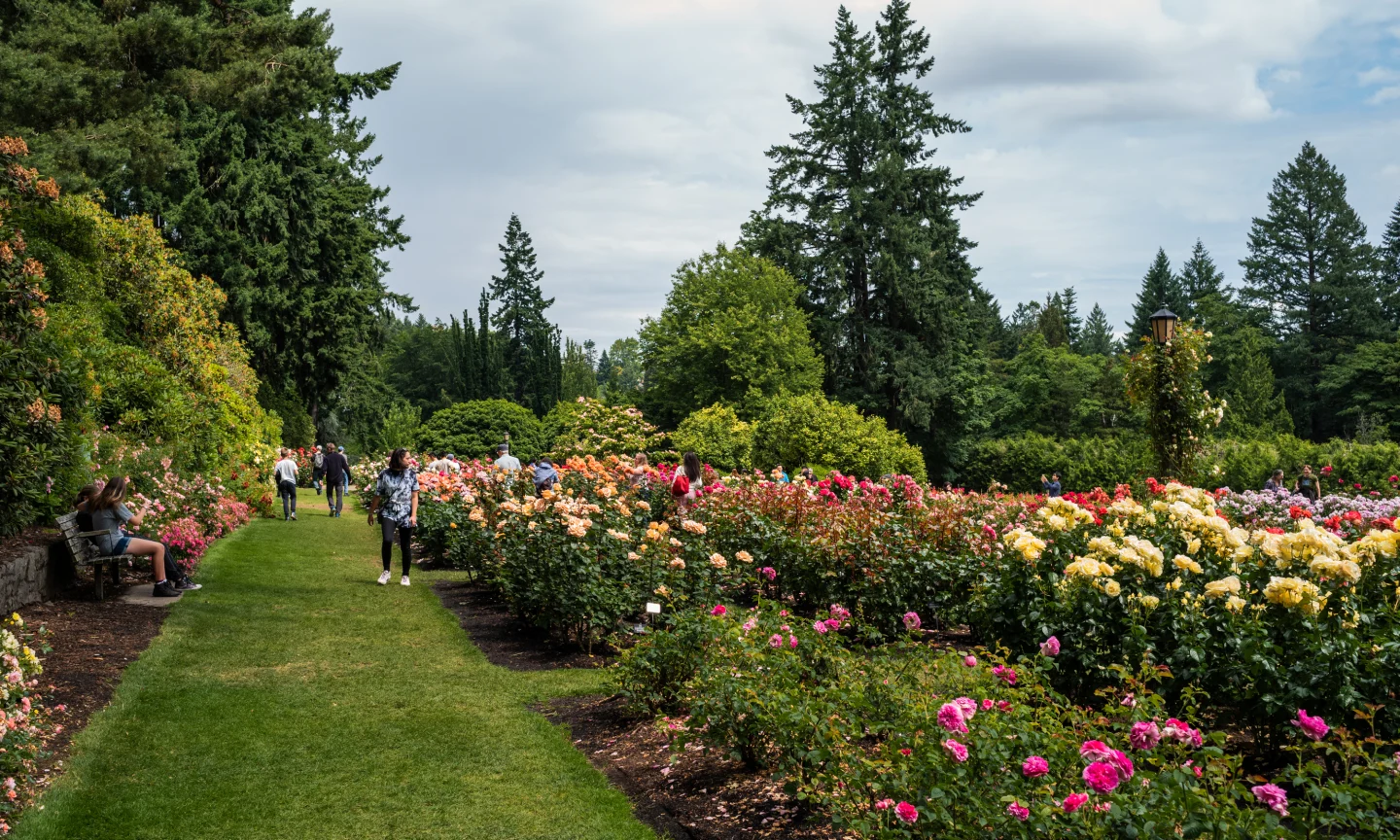
Name and Location: Washington Park is a public park located in North Omaha spanning over 20 acres.
History and Significance: Opened in 1892, Washington Park was part of Omaha’s original parks and boulevard system. Home to historic monuments and recreation facilities, the park has been a communal green space for Omaha’s north side for 130 years.
What to Expect: Open green space, sculptures, walking paths. Features a recreation center, community gardens, swimming pool, playground, basketball and tennis courts. Concerts and events in summer.
Visitor Information: Free admission. Park open daily 9am-11pm, rec center hours vary. Limited free parking around perimeter. Most areas accessible and kid/pet friendly.
Historic Washington Park borders South Omaha providing a convenient green space where neighborhoods have gathered for community fellowship since 1887. Soccer and baseball fields give area athletic clubs space for sport while tree-shaded lawns accommodate get-togethers large and small.
Two playground areas thrill kids with Equipment big and small while courts host volleyball, tennis and basketball games. The park’s calm Lagoon offers respite space to enjoy a packed lunch away from the hustle and bustle of active areas. From cultural festivals to charity walks and outdoor movies, Washington Park spends all year uniting South Omaha through accessible public events that build lasting community bonds.
Mandan Park
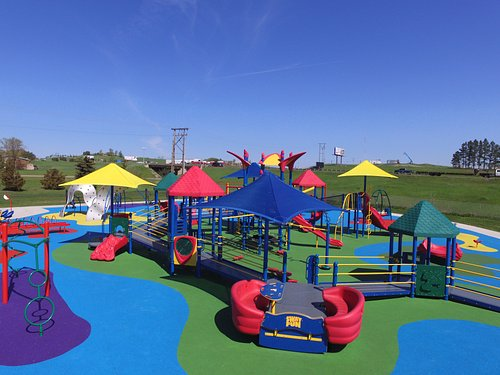
Name and Location: Mandan Park is a riverside public park located in North Omaha, Nebraska along the Missouri River.
History and Significance: Originally part of the grounds belonging to the historic Mandan Apartments, Mandan Park opened in 1989 with landscaping, trails and river access commemorating the tribes and explorers associated with the area.
What to Expect: Open green space, flower gardens, scenic trails along Missouri River bluffs with views and plaques describing history. Peaceful spot for walking, fishing and picnics. Features Native American styled memorial gates.
Visitor Information: Free access, open daily until 11pm. Limited street parking available. Mostly grass/dirt trails, partly wheelchair accessible to lodge/shelters.
Tucked alongside the Missouri River less than 10 minutes’ drive from downtown, Mandan Park provides a convenient nature getaway with hiking and biking trails that tour woods and peaceful prairies. Outdoor enthusiasts traverse the trails spotting birds and native wildflowers in season while anglers try their luck fishing the Missouri’s shoreline.
With Weaver’s Cove and Butterfly Hill Trailhead both located in Mandan Park, you can also access their extensive regional trails winding through forests, tallgrass prairies and wetland areas which support rich biodiversity. Thanks to its seclusion and preserved spaces, Mandan Park appears worlds away from city life yet remains close by for a quick escape reconnecting visitors back to untamed Midwest nature.
Gene Leahy Mall
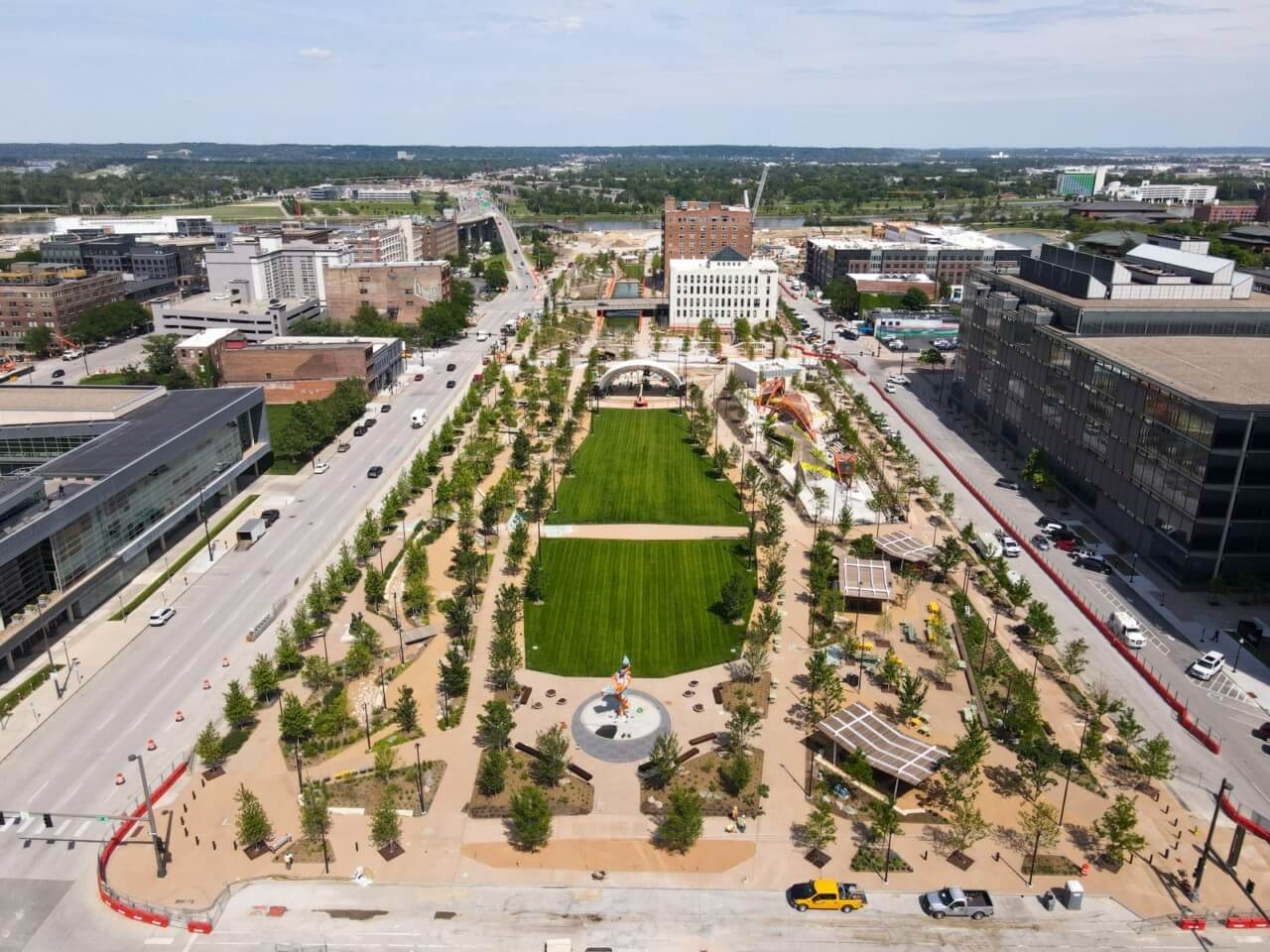
Name and Location: Gene Leahy Mall is a downtown public park located in Omaha, Nebraska spanning nine city blocks.
History and Significance: Originally built in the 1960s, Gene Leahy Mall has been renovated into a modern civic space with gardens, event areas, and underground green design features. Hosts many community cultural events year round.
What to Expect: Tree-lined pedestrian walkways, fountains, lawns, flower gardens. Year round events like festivals, music, holiday celebrations centered around space. Winter ice-skating rink. Public art installations.
Visitor Information: Free access, open daily. Limited metered parking along park roads, parking garages nearby. Easily walkable from Old Market district. Mostly wheelchair friendly.
Centrally located downtown along the Missouri River, Gene Leahy pedestrian mall offers nearly 9 acres of urban park space perfect for strolling, people watching and enjoying community happenings. Its central location, proximity to hotels and downtown businesses plus shady trees and plenty of seating make it a convenient place to relax while exploring Omaha.
Warm weather brings free live music, yoga classes, art and cultural exhibitions plus food trucks to the space while winter welcomes holiday markets and ice skating on the adjacent rink at Gene Leahy Mall. All year, splashing fountains, botanical greenery and the peaceful flow of the Missouri River delight visitors dropping by simply to unwind in an urban oasis.
Lauritzen Gardens
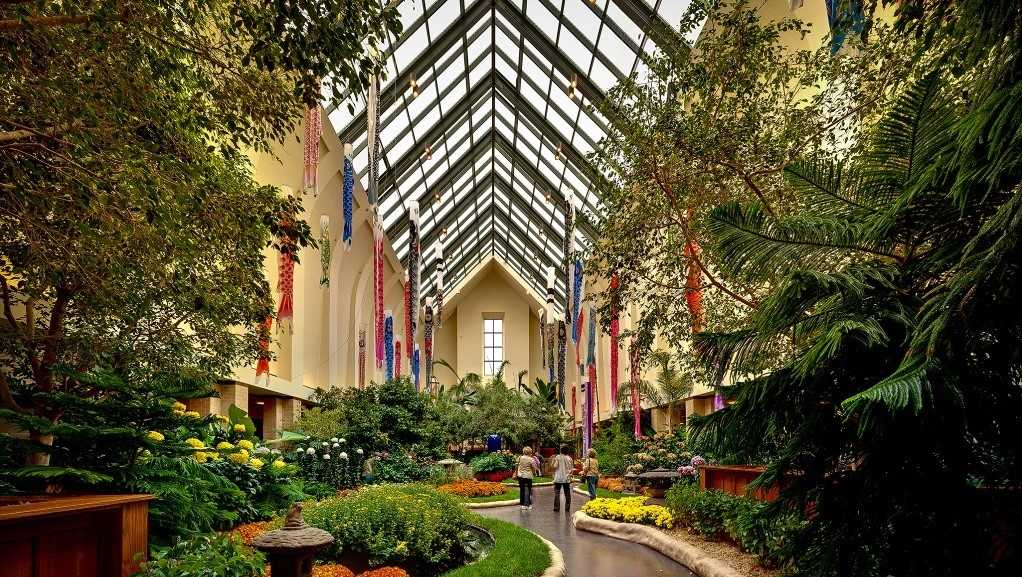
Name and Location: Lauritzen Gardens is a botanical garden located in Omaha, Nebraska.
History and Significance: Originally the family estate of Omaha business leader Charles Lauritzen, the gardens opened to the public as a nonprofit botanical center in 1995. It features 100 acres of botanical displays across 20 unique garden areas.
What to Expect: Visitors can explore a variety of themed gardens like the Victorian garden, herb garden, and arboretum. Seasonal floral displays, model railways, and children’s activities. The Marjorie K. Daugherty Conservatory is a must-see.
Visitor Information: Open daily from 9am-5pm. Admission is $10 for adults, $5 for kids over 4 years old. Onsite parking available. Tram tours and facility rentals offered.
Spread across 100 acres near Omaha’s riverfront, Lauritzen Gardens provides multiple diverse botanical escapes all connected via walking paths that wind through arboretums, specialty gardens and sweeping lawns. The Victorian Gardens and Herb Garden craft ornate floral designs from colorful perennials and textural shrubs while the Spring Woodland Walk impresses with wildflowers and flowering bulbs.
Inside the tropical Marjorie K. Daugherty Palm Conservatory, vibrant orchids, cacao trees, lush palms and fragrant vines thrive alongside koi ponds and water features. Ramble through diverse landscapes or stop and smell vibrant roses along meandering trails ideal for replenishing your senses away from urban stimulation. Explore arcing trellises, diverse textures and brilliant colors illustrating horticultural artistry across 100 acres for free at Lauritzen Gardens.
Hanscom Park
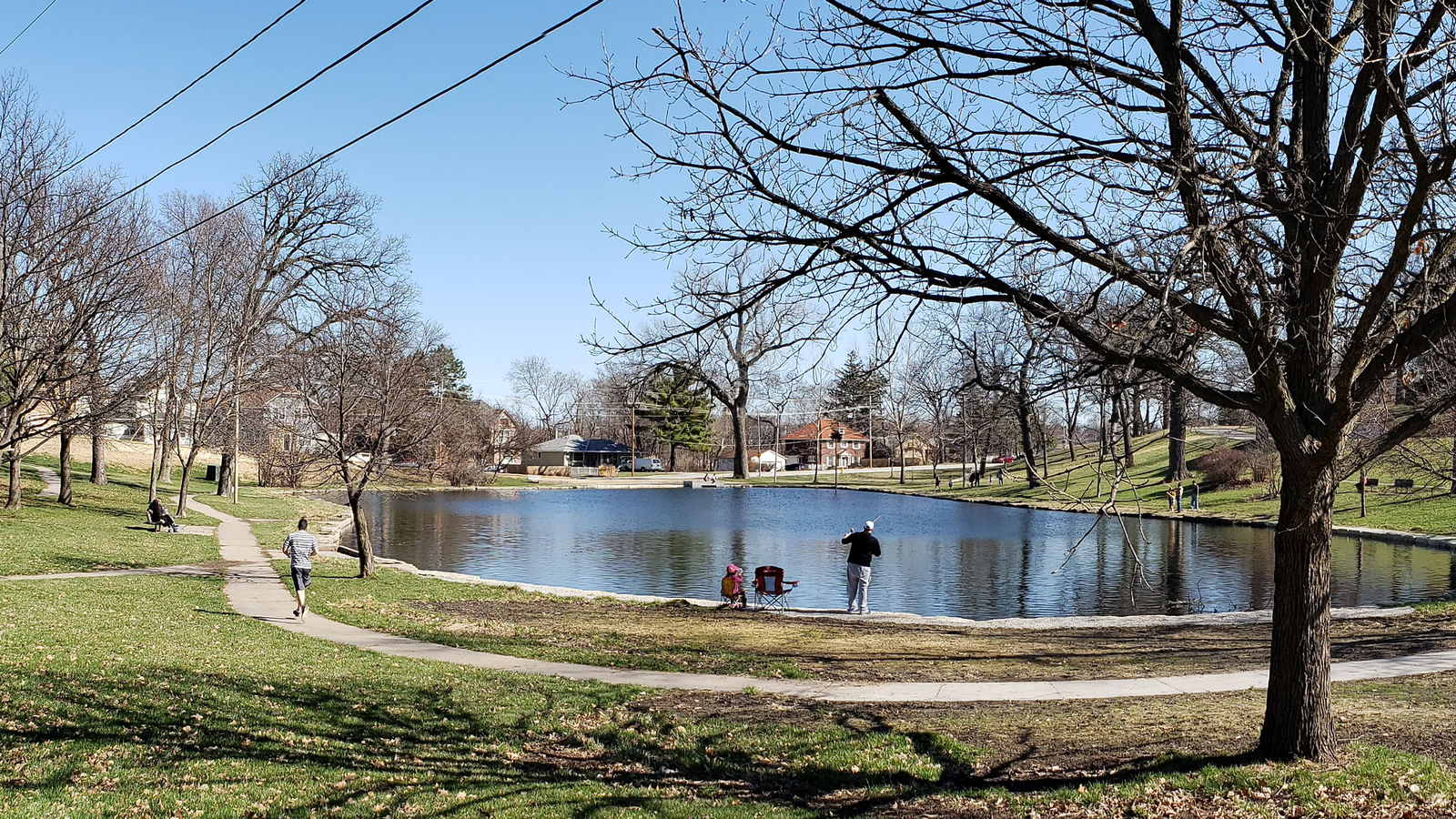
Name and Location: Hanscom Park is a public park in midtown Omaha spanning 75 acres.
History and Significance: One of Omaha’s early parks when purchased in 1872, Hanscom Park is listed on the National Register of Historic Places. Notable for its prairie landscaping, Peace Pole, and role in Ak-Sar-Ben festivities historically.
What to Expect: Open green space, historic monuments, flower gardens, paved walking paths. Features tennis courts, playground, basketball court, diamond sports fields. Popular dog park location.
Visitor Information: Free access, open daily 6am-11pm. Some free parking available within park grounds. Partly handicap accessible, mostly paved main paths.
Hanscom Park’s location near midtown Omaha provides neighborhood kids places to play on colorful equipment while families lay out blankets for picnics among the open greenery. Baseball diamonds host casual games with tennis courts, basketball hoops and a loop walking trail rounding out recreational amenities for staying active.
Iconic gazebos offer shade on sunny days and shelter during spring showers while stone bridges add quaint ambiance spanning the park’s creek and pond. Neighborhood crowds flock here to celebrate 4th of July under glowing fireworks bursting brightly in the night sky above Hanscom Park. Tranquil despite its central locale, Hanscom Park holds history as one of Omaha’s oldest parks where visitors continue making family memories over a century later.
Zorinsky Lake Park
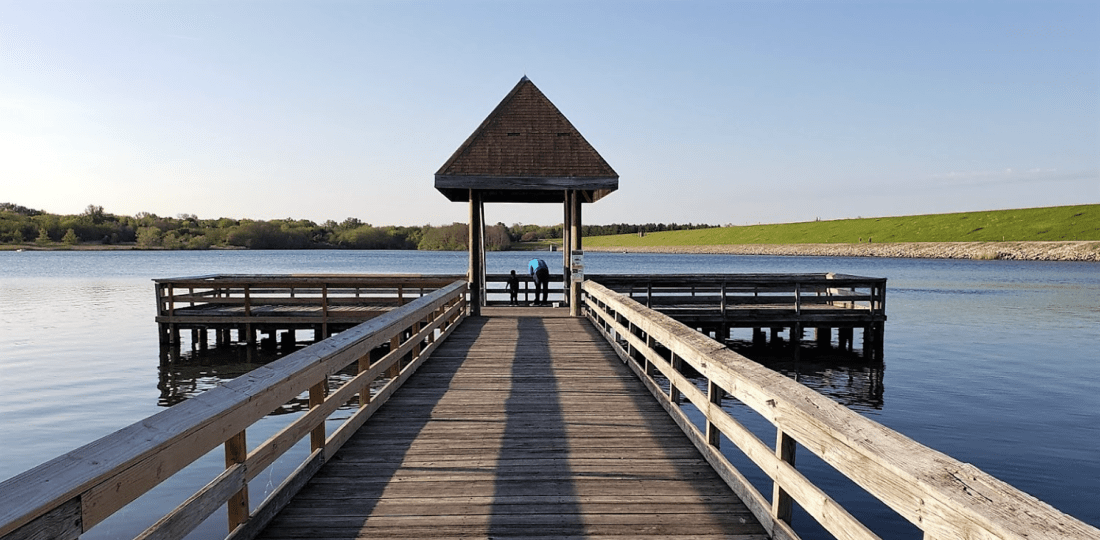
Name and Location: Zorinsky Lake Park encompasses over 770 acres in western Omaha.
History and Significance: Created from a former gravel pit mine, Zorinsky Lake Park opened to the public in 1989 as one of Omaha’s premiere recreation parks with a central man-made lake. Hosts family events and races year-round.
What to Expect: Prominent lake for boating, swimming, fishing. Surrounding trails for hiking, biking, running and skating. Wildlife viewing, sporting facilities, playground, picnic shelters, food vendors.
Visitor Information: Park open daily 5am-11pm. $7/car entry fee applies. Main trails paved for accessibility. Pets permitted on leashes, ample parking.
Completely manmade, Zorinsky Lake Park owes its creation and namesake to former Omaha mayor Albert Zorinsky’s environmental protection efforts transforming once natural wetlands into the park systems crown jewel. Today its sparkling 255-acre centerpiece invites summertime swimmers, standup paddlers and leisurely boaters to its waters.
Over 15 miles of multi-use trails wrap the lake’s perimeter, lacing through prairie lands decorated in wildflowers seasonally while following the west Papillion Creek watershed feeding the basin. Hiking, biking or taking your pup around the scenic reservoir, Zorinsky Lake Park provides the picturesque outdoor recreation escape for appreciating the riparian and prairie landscapes native to Nebraska.
Turner Park
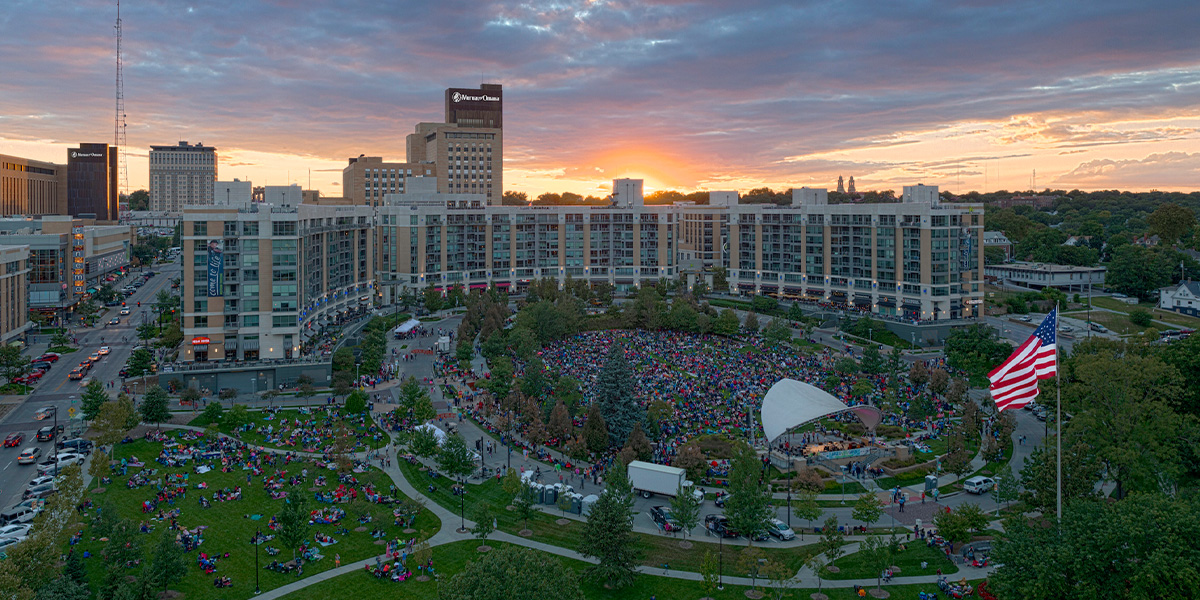
Name and Location: Turner Park is an urban park located midtown in Omaha, Nebraska spanning 39 acres.
History and Significance: Deeded to the city in 1885, Turner Park is one of Omaha’s legacy public parks. Its central location and cultural facilities have made it a popular gathering place for the community for 130 years.
What to Expect: Open green space with rose gardens and floral landscaping. Features a baseball field, tennis courts, walking paths, playground, outdoor performing arts theater hosting events.
Visitor Information: Free access, open daily 9am-11pm. Limited street parking nearby. Main paths paved for accessibility, weekly lawn concerts in summer.
Historic Turner Park near downtown spans 80 acres dotted with baseball diamonds, tennis courts, and playground equipment keeping visitors active. Its central location encourages community gatherings for movie nights under the stars at the park amphitheater or cultural festivals celebrating Omaha’s diversity.
The real jewel though lies at Turner Park’s heart – the architecturally stunning Joslyn Castle. Tour its intricate handcarved teak and mahogany woodwork then marvel at mutant marble fireplaces and mosaic tile ledges displaying true artisanship of the highest degree. Built in 1903, Joslyn Castle now operates as a museum where visitors glimpse into Omaha’s past as far back as 1893. Admire regal ruins from the outside or tour period motifs inside at no cost when visiting Omaha’s own Turner Park.
Chalco Hills Recreation Area
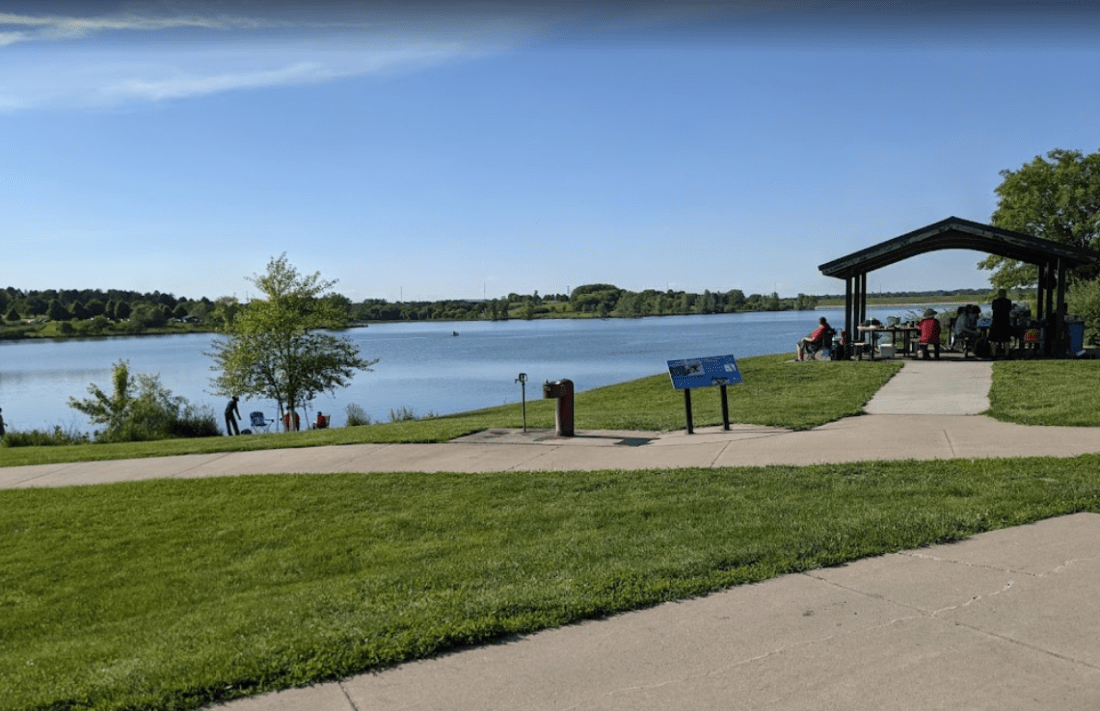
Name and Location: Chalco Hills Recreation Area is a public park located southwest of Omaha, Nebraska near the Platte River.
History and Significance: Originally opened in the 1980s, Chalco Hills offers diverse recreation options conveniently close to Omaha. Birdwatching has become popular due to wetlands/grassland habitat attracting many migratory species.
What to Expect: Miles of trails for hiking, biking and horseback riding through prairie and wooded areas. Two fishing ponds, archery range, disc golf course. Prime location for spotting native birds along the Loop Trail system.
Visitor Information: Park open daily from 5am-11pm. $7/vehicle entry permit required, sold onsite. No hiking trails open after dark. Pets allowed on leashes, bikes permitted on trails.
Bordering the Platte River’s eastern edge, Chalco Hills Recreation Area offers prime wildlife viewing opportunities, especially for rare birds migrating along the Central Flyway overhead. Hike through rolling grassland, wet meadows and wooded cottonwood forest via the Peter Kiewit Lodge Trail to then climb the Rick Lee Observation Tower scoping birds gliding the marshland like herons and hawks.
From March through April, Chalco Hills also grants visitors the lucky chance to witness the awe-inspiring migration of a half million Sandhill Cranes. Their massive flocks rest and feed in the area wetlands and meadow during their extraordinary yearly travels. Just remember to look skyward now and then while appreciating verdant landscapes at Chalco Hills Recreation Area to potentially glimpse these regal birds in flight.
Seymour Smith Park
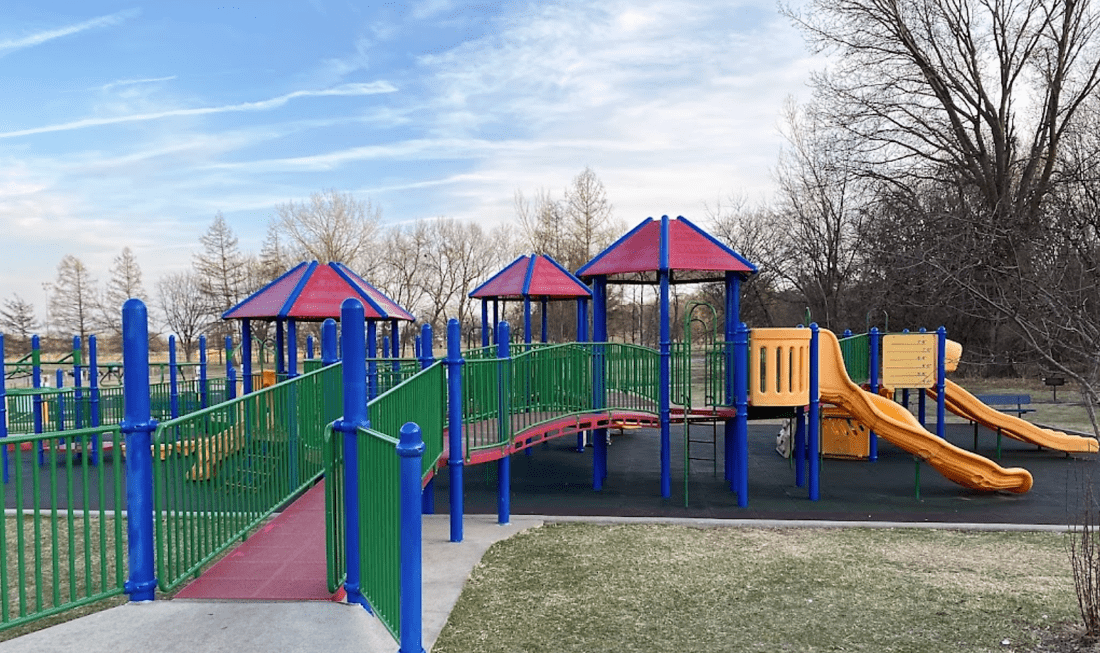
Name and Location: Seymour Smith Park is an extensive public park located in south Omaha spanning 350 acres.
History and Significance: Created from a former landfill site, Seymour Smith Park opened in 1999 as one of Omaha’s largest park projects. Designed as a nature recreation space with restored prairie and wetlands. Connected to Keystone Trail system.
What to Expect: Rolling hills, woodlands, meadow trails for hiking/biking with Missouri River valley overlooks. Observation tower, archery range, fishing lagoons, butterfly garden, model airplane airfield.
Visitor Information: Free access, open daily 5am-11pm. Ample free parking. Restrooms and visitor center onsite. Leashed pets permitted, wheelchairs limited to hard surfaced paths.
Offering 100 acres of rural nature escapes in southwest Omaha, Seymour Smith Park delights visitors. Gravel hiking/biking paths tour through prairie, woodlands and wet meadows vibrantly colored by native wildflowers from April through October. The park’s diverse landscape and seclusion create ideal shelter and food sources nurturing local wildlife galore.
Bring binoculars and cameras to spot or snap bald eagles fishing the marsh, hummingbirds and indigo buntings fluttering wildflowers and the massive fourteen point white-tailed buck residents have dubbed Walter who roams the park. Built atop a decommissioned landfill from the mid 20th century, Seymour Smith Park remarkably transformed once empty space into a paradise humbly providing immersive nature moments for all.
So whether seeking active recreation through sport, appreciating public art and culture via events or simply finding some outdoor serenity surrounded by nature, this list highlights premier green spaces across Omaha offering something for everyone to enjoy.

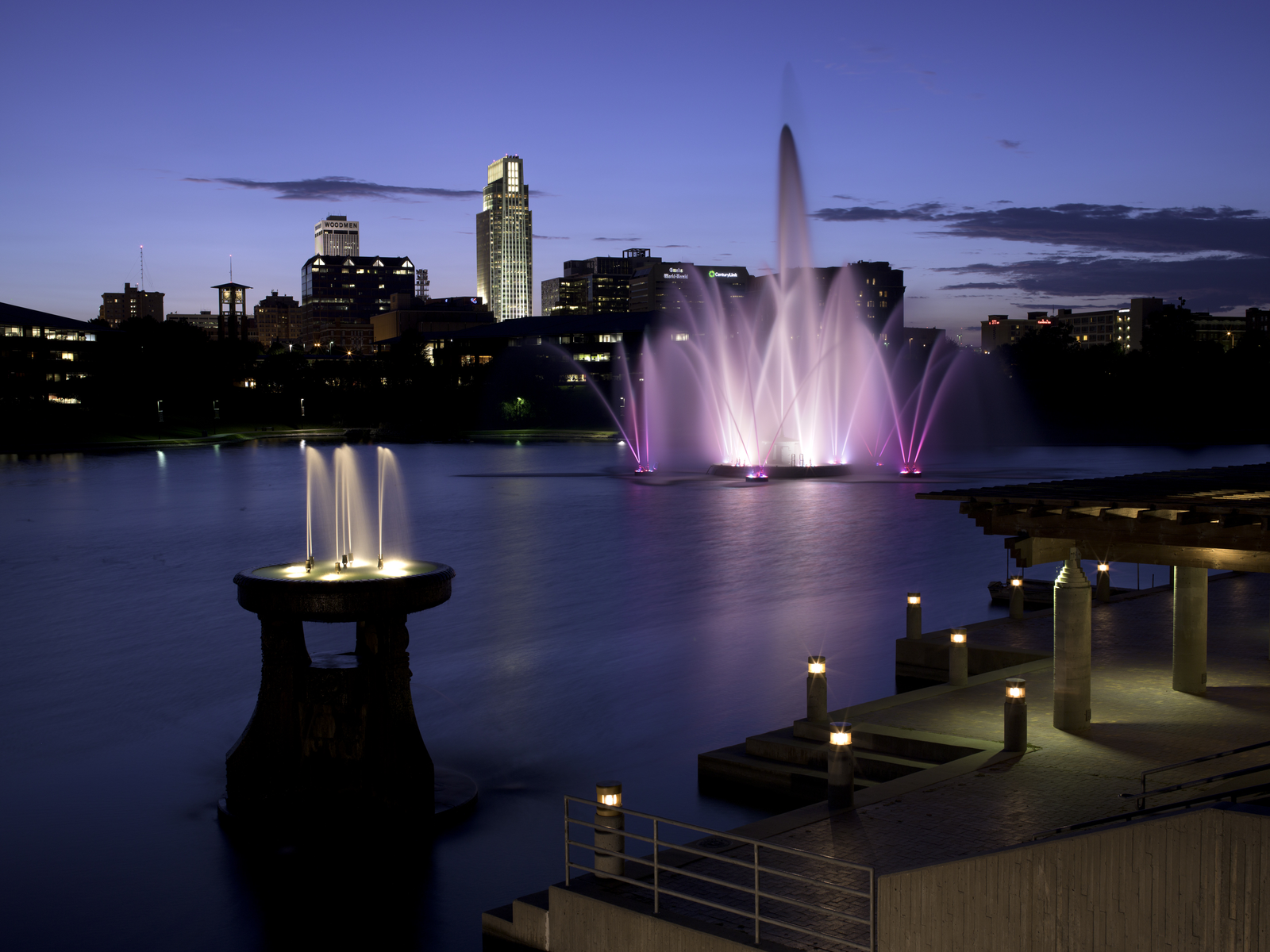

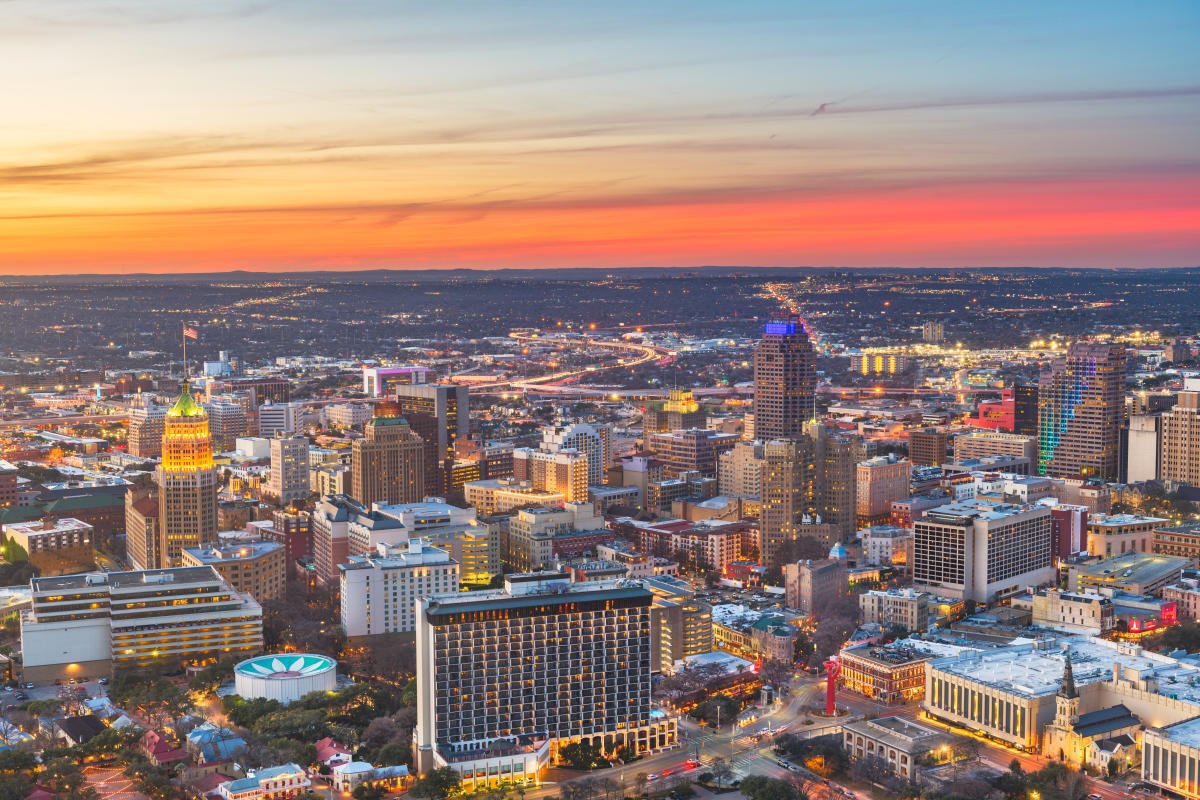

Join the Conversation